
Andy Lloyd's Dark Star Blog

Blog 23 (February 2015)
Stars Transit Oort Cloud 70,000 years ago
The solar system was visited by a passing binary star system while modern humans walked the Earth. This is the startling implication of a new scientific finding regarding the recently discovered nearby, low-mass binary system WISE J072003.20-084651.2 (thankfully known simply as 'Scholz's star', after its discoverer). Analysis of its velocity relative to the Sun's indicates that Scholz's star passed through the outer Oort Cloud some 70,000 years ago, coming within 0.8 light years of the Sun - a fifth of the distance from that of our nearest neighbour Proxima Centauri (1). The team who conducted the work realised that there was something unusual about Scholz's Star because of its low lateral movement across the sky, despite its relatively short distance from us. This hinted that it was largely either moving towards the Sun, or away from it. As it turned out, the close encounter had already taken place.
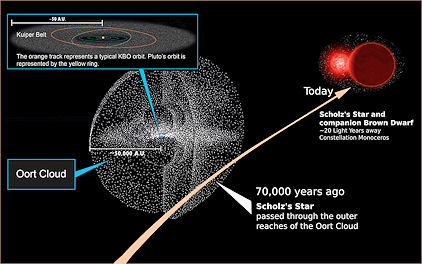
Image Credit: Universe Today
Scholz's Star is actually a binary system (as most star systems in the galaxy are). The Scholz's Star binary is composed of a red dwarf star (of 8% solar mass) and its accompanying brown dwarf companion (of 6% solar mass). Having once buzzed the outer reaches of the solar system, they are now some 20 light years distant.
Even at its closest approach, Scholz's Star would have been too dim to have been seen as a naked eye object - except that red dwarfs have strong magnetic properties and are known to emit very significant flares. During just such an active period, the transiting star might have been noticeable in the heavens for a short time (1). Thus, our distant ancestors might well have had reason to wonder at the sudden and transitory appearance of a red star in the sky. Could this have been the mythical Nibiru? It seems unlikely, unless this brief appearance (or series of appearances) was followed by a highly dramatic event on Earth...
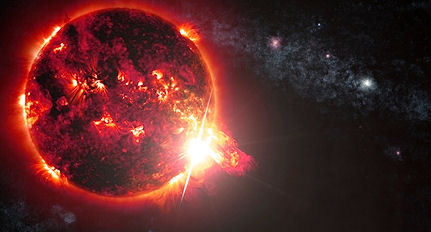
Is it possible that these stellar usurpers disturbed the tranquillity of the outer Oort Cloud, causing a rain of comets to descend towards the Sun (the "Grand Theft Oort-o" scenario, according to the BBC!)? It seems as though the impact on our system was relatively weak, with a negligible likelihood that they impinged sufficiently deep into the solar system (around, say, 20,000AU) to have caused significant perturbation of the comet clouds (2):
"A star passing through the Oort Cloud could potentially play gravitational havoc with the orbits of comets there, sending them on trajectories into the inner Solar System. But Dr Mamajek [of the University of Rochester, New York] believes the effects of Scholz's star on our cosmic neighbourhood were "negligible".
"There are trillions of comets in the Oort cloud and likely some of them were perturbed by this object," he told BBC News. "But so far it seems unlikely that this star actually triggered a significant 'comet shower'."
The effect of a passing star on the Oort Cloud is a function of the star's mass, speed and proximity. The worst case scenario for stirring up comets would be a slow-moving, massive star that came close to the Sun. Scholz's star came relatively close, but the binary system (the red dwarf and its brown dwarf companion) has a low mass and it was speeding by. These factors conspired to make its effect on the Oort Cloud very small.
While this is the closest flyby detected so far, Dr Mamajek thinks it's not uncommon for alien stars to buzz the Sun. He says a star probably passes through the Oort Cloud every 100,000 years, or so. But he suggests an approach as close - or closer - than that made by Scholz's star is somewhat rarer. Dr Mamajek said mathematical simulations show such an event occurs on average about once every nine million years.
"So it is a bit of a strange coincidence that we happen to have caught one that passed so close within the past 100,000 years or so," he said." (3).
Even so, it is interesting to note that around 73,000 years ago (+/- 4000yrs) a major catastrophe did actually take place on Earth, which some think may have had a significant detrimental impact on the human population around that time:
"The Toba supereruption was a supervolcanic eruption that occurred some time between 69,000 and 77,000 years ago at the site of present-day Lake Toba (Sumatra, Indonesia). It is one of the Earth's largest known eruptions. The Toba catastrophe hypothesis holds that this event caused a global volcanic winter of 6–10 years and possibly a 1,000-year-long cooling episode. In 1993, science journalist Ann Gibbons suggested a link between the eruption and a population bottleneck in human evolution.
"The Toba eruption took place in Indonesia and deposited an ash layer approximately 15 centimetres thick over the whole of South Asia. A blanket of volcanic ash was also deposited over the Indian Ocean, and the Arabian and South China Sea. Deep-sea cores retrieved from the South China Sea have extended the known reach of the eruption, suggesting that the 2800 km3 calculation of the erupted mass is a minimum value or even an underestimate." (4)
The super-eruption caused extensive deforestation across Asia, and is thought to have reduced the average global temperature by 3 to 3.5 degrees Celsius for several years, possibly triggerring an ice age (5), although this has been challenged recently (6).
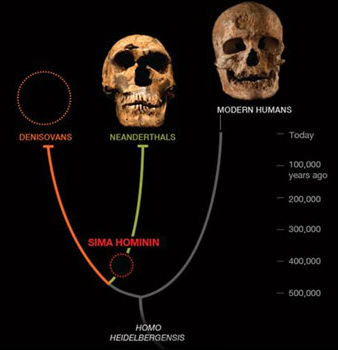
Some have theorised that the effect of this explosive volcanic eruption was so great that several human lineages were wiped out, allowing the extant modern human line to take hold. However, this flies in the face of evidence of the subsequent survival of Neanderthals into more modern times, as well as the remarkable discovery of Homo Floresiensis remains in central Indonesia, which date to between 95,000 and 13,000 years ago (7). Furthermore, prehistoric artifacts discovered in India, dating to the post-eruption period, suggest that humans generally survived the eruption's aftermath (6).
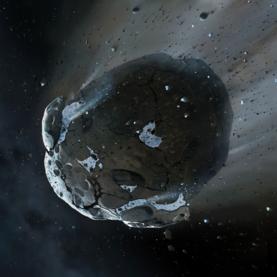
Part of the problem with the Toba catastrophe hypothesis appears to be that the distribution of the ashen and glass remains is far from even across Asia and Africa. Perhaps, then, some of the localised signatures of catastrophe might be attributable to other events - like a series of localised impacts by minor long-period comets? One might then link this to the perturbation of the outer Oort Cloud by Scholz's Star. This seems an unlikely possibility, but a possibility all the same. At the very least, the passage of Scholz's Star and its brown dwarf companion through the outer Oort Cloud provides a modern precedent for these kinds of near-misses. Given that there may well be more dark, dwarf stars awaiting discovery in the Sun's neighbourhood, there is great potential for future, equally startling discoveries:
"While the flyby of this system likely caused negligible impact on the flux of long-period comets, the recent discovery of this binary highlights that dynamically important Oort Cloud perturbers may be lurking among nearby stars." (2)
Written by Andy Lloyd, 24th February 2015
References:
1) University of Rochester "Closest known flyby of star to our solar system: Dim star passed through Oort Cloud 70,000 years ago" 17 February 2015
with thanks to Scott
2) Eric E. Mamajek, et al. "The Closest Known Flyby of a Star to the Solar System" The Astrophysical Journal Letters, 800: L17, 12 February 2015
3) Paul Rincon "Alien star system buzzed the Sun" 18 February 2015 with thanks to Paul
4) "Toba catastrophe theory"
5) "Toba catastrophe theory"
6) Charles Choi "Supervolcano Not to Blame for Humanity's Near-Extinction" 29 April 2013
7) Andy Lloyd "The Hobbit and the Dark Star" 13-20 November 2004
Missing Angular Momentum and the Dark Star
Last month, in Dark Star Blog 22, I published some correspondence with an applied scientist about the Dark Star, and its place in solving the mystery of the solar system's lost angular momentum. I'm happy to say that his detailed scientific paper has now being published online on Luca Scantamburlo's website (1). The author prefers to remain more or less anonymous at this time, and is simply hoping that his paper will generate discussion and perhaps some investigative research on the part of astrophysicists interested in this solving this issue. He writes:
"Just to refresh where we left off, my contention is that the Sun has to have a distant object rotating around it because there's too much angular momentum in the solar system that can't be accounted for based only on the conventional objects orbiting the Sun. I have a complete mathematical description of why I believe this is true and a lower bound estimate for how large the dark star should be to account for a lower estimate for the solar system's missing angular momentum. I believe NASA is well aware of this object and I provide rationale for why I believe this." (2)
After a short overview of the historical hunt for
Planet X and some of the controversies that swirl around this
contentious subject, R.F. sets out the angular momentum problem in his
paper:
"Whether a massive unseen object is looming in the outer reaches of the
Sun's gravitational dominion or not, something about the solar system's
configuration is a bit odd in any case. The mass of the Sun contains
over 99% of the mass of the entire known solar system and yet less than
4% of its angular momentum. From classical physics we know that angular
momentum is always conserved in a “closed system”, so how can there be
such a skewed imbalance between how much the Sun has versus how much the
planets have? Jupiter has over 60% of the system's angular momentum by
itself. The great minds of astronomy have never reached a consensus on
why this is so or why an even larger disparity discussed below is also
glaring. There's a deep puzzle about the solar system's arrangement, and
this paper will attempt to unravel it." (1)
It should be noted that the author thinks it likely that NASA is well aware of the existence of this object, having practically announced it back in 1983 (3), but has since chosen not to recognise its existence publicly, for whatever reason. He goes on to discuss the generally accepted notions of planetary system formation, and how angular momentum is conserved in these systems as they settle down over time. Having established his initial premises, he launches into the maths. The solar system has lost over 95% of its angular momentum (and this is a very conservative estimate, apparently) and this massive loss has no clear explanation in conventional astronomy.
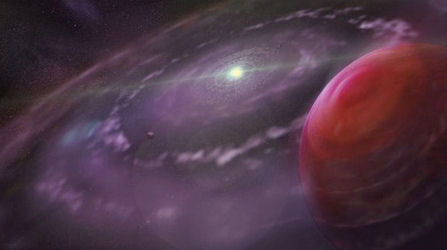
The author wonders whether the angular
momentum was never actually lost after all, but instead resides in a
massive, distant companion object exhibiting a long-period orbit.
He considers a range of values for such an object, both in terms of its
orbital period and its mass (several of the values he chooses are based
upon the work of other researchers who have offered hypothetical
scenarios for a companion object which has a relatively close proximity
(Warmkessel (4) and Cruttenden (5) as well as values associated with a
Nemesis object deep in the outer Oort Cloud). The maths indicate
that an object of several Jupiter masses is required to close the gap
between the theoretical and observed values for total solar system
momentum. The author then wonders whether the Sun itself may hold
the key to its discovery insofar as the Sun should be scribing its own
elliptical orbit through space in response to the Dark Star's
gravitational influence: That movement, however slight, should be
measurable.
"If the Sun is scribing an elliptical orbit
through space then so is the Earth and all the other planets, and
current instrumentation can sense it. A similar measurement was done
with Mercury's perihelion precession several decades ago. If we really
want to know if the solar system's missing angular momentum is due to a
large distant object in orbit around the Sun, we have the technology to
determine it." (1)
Will Science seek to answer this question? So far, R.F.'s paper has not brought forth any response from the academic astrophysicists it has been sent to. Perhaps the conspiratorial tone of the paper has put them off. Or perhaps they recognise only too well that there is some truth to the assertion that a massive binary companion is the simplest solution to the enigma of the solar system's missing momentum. Such a scenario brings its own set of uncomfortable consequences.
Written by Andy Lloyd, 23rd February 2015
References:
1) R.F. (full name known to me) "Speculations on the Sun's Dark Star Companion, According to Physics" 14 February 2015
2) Correspondence from R.F. 15 February 2015
3) Thomas O'Toole, “Mystery Heavenly Body Discovered”, The Washington Post, A1, 30 December 1983
4) Kuehne, H., Warmkessel, B., “Vulcan's New Orbital Parameters”
5) Cruttenden, W., “Calculations”
binaryresearchinstitute.org article
The Habitability of Red Dwarf Systems
In recent years, it has become more acceptable to speak of dwarf star systems as potentially being good places to find life. While my main interest is in super-cool sub-brown dwarfs (one of which I believe to be orbiting the Sun), we can learn a lot from their bigger sisters, the red dwarfs. They're a lot more easy to find than brown dwarfs, being that much brighter, and are much more prevalent than yellow dwarfs, like the Sun. Their milder energy output means that habitable planets would need to be that much closer in than the Earth is to the Sun, but that need not present too much of a problem given the sheer abundance and variety of exoplanets in the galaxy. What might be a problem, though, is whether water can survive on the surface of a planet tucked in close to a red dwarf - and this has become something of a talking point among astronomers.
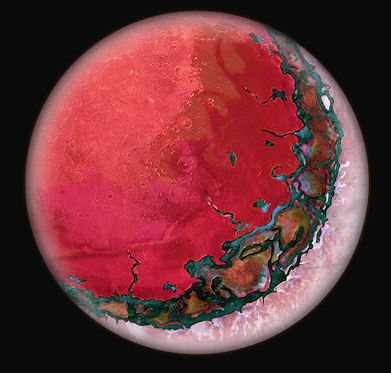
The "Eye of Horus" Homeworld
The main issue is that the closer a planet gets to its parent star, the more likely it will become tidally locked, in the same way that the Moon is as it orbits around the Earth. The Moon always shows the same side to us, rotating on its axis at the same rate as it orbits around the Earth. If the Earth was its source of light rather than the Sun, then the Moon would have a permanently light side and a permanently dark side. This is the scenario for a planet in the habitable zone of a red or brown dwarf star.
So is this a problem? Perhaps. Recent work has shown that tidal locking of habitable rocky worlds may not be as prevalent as once thought (1):
"... The gentle tug of a star’s gravity on a relatively thin atmosphere can keep a planet spinning even when other forces threaten to slow it down. While planetary scientists have long suspected that this process keeps Venus slowly turning, the mechanism could also work on a planet without Venus’ massive atmosphere." (2)
But let's assume that the planet does indeed become tidally locked to its parent dwarf star, as critics argue. The dark side of such a planet might freeze out, while the volatiles on the light side might be driven off, bringing about extremes of climate that necessarily preclude the existence of liquid water and thus life. Or there might be a runaway greenhouse effect. Either way, the planet might look rather different to those in our solar system:
"A common conception of tidally locked, Earth-like worlds around red dwarfs is that a great ocean of liquid water would dominate the daytime side. If the planet were hotter, that ocean might evaporate, creating a large land mass perhaps ringed by water along the temperate, day-night boundary line. The night side would be piled high with massive ice sheets and shelves. Overall, the world, when viewed from the star's perspective, might look like a giant eyeball, and so these putative planets have been dubbed "eyeball Earths."" (3)
This is exactly the scenario I envisioned for my novel "The Followers of Horus" (4) - the 'Homeworld' of the Anunnaki being the "Eye of Horus" revolving in a tidally locked orbit around the Dark Star, immersed in its dim red light.
The latest scientific thinking seems to indicate that water would not be driven totally to the night side of the planet as feared. New computer modelling by geophysicists suggests that buffering mechanisms involving ocean currents and weather patterns would prevent such a 'black-and-white' scenario from taking a complete grip on a tidally locked world in close proximity to a red dwarf star (5). For desiccation to occur, the planet would need to have less than half of the Earth's water to begin with, creating special conditions necessary for the feared 'water-trapping' scenario. This is good news, of course, particularly as red dwarf systems have other positives in their favour making them potentially perfect crucibles for the evolution of life:
"Red dwarf planets are potentially key places to search for life as we know it, not just because there are so many of them, but also because of their incredible longevity. Unlike our Sun, which will die in a few billion years, red dwarfs will take trillions of years to burn through their fuel, significantly longer than the age of the Universe, which is less than 14 billion years old. This longevity potentially gives red dwarfs a great deal more time for life to evolve around them." (6)
As I mentioned at the outset, this kind of thinking likely also pertains to planets in brown dwarf systems. Planets in the habitable zones of these cooler 'stars' are highly likely to be tidally locked, and so the stakes are just the same. The moderating influence of oceanic and atmospheric cycles creates apt conditions for life to emerge and be sustained on such a world.
Written by Andy Lloyd, 24th February 2015
References:
1) Jérémy Leconte et al. "Asynchronous rotation of Earth-mass planets in the habitable zone of lower-mass stars" Science, 347: 6222, 632-635, 6 February 2015
2) Christopher Crockett "Rocky planets around cool stars may have Earthlike climates" 15 January 2015, with thanks to Lee
3) Adam Hadhazy "'Water-Trapped' Worlds: Life Around a Cool Star" 25 July 2013
4) Andy Lloyd "The Followers of Horus" Timeless Voyager Press 2010
5) Jun Yang et al "Water Trapping on Tidally Locked Terrestrial Planets Requires Special Conditions" The Astrophysical Journal Letters, 796: L22, 2014
6) Charles Choi "Planets Orbiting Red Dwarfs May Stay Wet Enough for Life" 17 February 2015 with thanks to Lee
The Curious Case of the Missing Brown Dwarf
Many of the early exoplanets were discovered through analysing tiny, periodic movements of the parent star. These wobbles indicated the gravitational influence of a massive, dark companion object tugging at the star as it orbited around it. While many of these early exoplanets were gas giants nestling up to their parent stars, some were brown dwarf companions whose own mass was too low to sustain sufficiently strong light production to be seen, or whose feeble light was simply lost in the glare of the parent star.
Another tried and tested method for finding dark companion objects is monitoring the variability of light from a star - a periodic dimming of the light might indicate the passage of the dark companion as it eclipses the star.

Boys and their toys... The SPHERE instrument attached to the VLT
Similarly, the light from a binary star system may vary as one star eclipses the other. Until this month, this very scenario was believed to pertain to the binary star system V471 Tau. Periodic variations in V471 Tau's 'eclipse arrival times' strongly hinted at the existence of a third companion object pulling at the binary's centre of mass (1). The projected mass of that dark object hinted at a hidden brown dwarf in the binary system.
So definitive was this evidence that a team of astronomers made use of the new SPHERE camera system at ESO's Very Large Telescope in Chile to find the companion object. They trained the powerful VLT on V471 Tau, confident in the knowledge that they would soon be the first to set eyes upon this theorised brown dwarf star. It didn't quite turn out that way. The SPHERE images were so accurate that they would have been able to reveal a brown dwarf companion 70,000 times fainter than the central star, and only 0.26 arcseconds away from it (2). The expected brown dwarf companion in this case was predicted to be significantly brighter than this. The brown dwarf was, it seems, nowhere to be seen.
If the brown dwarf really is there, as theory dictates - argue the astronomers in their paper - then it must be significantly dimmer than predicted for a brown dwarf of that mass:
"This implies that there is no brown dwarf present in the system unless it is 3 mag fainter than predicted by evolutionary track models, and provides damaging evidence against the circumbinary interpretation of eclipse timing variations. In the case of V471 Tau, a more consistent explanation is offered with the Applegate mechanism, in which these variations are prescribed to changes in the quadrupole moment within the main-sequence star." (2)
The team seem to think, then, that the lack of brown dwarf companion is a reality and that the periodic variations in luminosity from the system can instead be explained by the Applegate mechanism; a rather technical explanation for which follows:
"Some eclipsing variables are observed to undergo orbital period modulations of amplitude 10 exp -5 over time scales of decades or longer. These modulations can be explained by the gravitational coupling of the orbit to variations in the shape of a magnetically active star in the system. The variable deformation of the active star is produced by variations in the distribution of angular momentum as the star goes through its activity cycle. The torque needed to redistribute the angular momentum can be exerted by a mean subsurface magnetic field of several kilogauss." (3)
In other words, there are sufficient magnetic field variations in the dominant star to actually change its very shape, leading to variability in its brightness over time. This seems to be pushing it a bit. Note that the Applegate mechanism provides a means for understanding variability over "decades or longer". Yet, the eclipse arrival times of the binary system in question are presumably based upon the speed with which the two stars dance around each other, which is actually very rapid indeed:
"The two stars are very close and orbit each other every 12 hours. Twice per orbit one star passes in front of the other — which leads to regular changes in the brightness of the pair observed from Earth as they eclipse each other." (2)
Decades versus hours. How does the Applegate mechanism possibly apply to this scenario? We're in the realm of new physics following this line of reasoning.
Let me suggest that the missing brown dwarf companion is indeed there, but is, as they say, a great deal dimmer than anticipated from theory. Which sort of reminds me of a problem that bit closer to home...
Written by Andy Lloyd, 24th February 2015
References:
1) Andrew Fazekas "In a Curious Case for Astronomers, a Brown Dwarf Goes Missing" 18 February 2015 with thanks to Lee
nationalgeographic.com article
2) European Southern Observatory "Disproving the Predicted Brown Dwarf around V471 Tau" 18 February 2015
3) A. Hardy et al. "The First Science Results from Sphere: Disproving the Predicted Brown Dwarf Around V471 Tau" The Astrophysical Journal Letters, 800: L24, 18 February 2015
4) James Applegate "A mechanism for orbital period modulation in close binaries" Astrophysical Journal, Part 1, 385: 621-629, 1 February 1992
Tiamat Sheds Her Skin
One of the ideas put forward by the late Zecharia Sitchin was that of the Earth's precursor, Tiamat (1). Tiamat was a Babylonian sea-monster which took centre stage in the Enuma Elish's Celestial Battle with the usurper god Marduk. In Sitchin's cosmogony, the Ancient Mesopotamians were describing planets when they related their stories of their gods (and, to be fair, the Enuma Elish really is littered with references to stars and planets (2)). Tiamat, an immense, watery world, was rended asunder by the rogue god Marduk, forming the Earth and the Hammered Bracelet, which Sitchin took to mean the Asteroid Belt. So, those of us interested in exploring these ideas consider Tiamat to have been some kind of oceanic super-Earth originally located between Mars and Jupiter, and Marduk to have been a Planet X body, either in the form of a sub-brown dwarf Dark Star, or, as Sitchin described it, an angry, fiery planet emerging from the void every 3600 years.
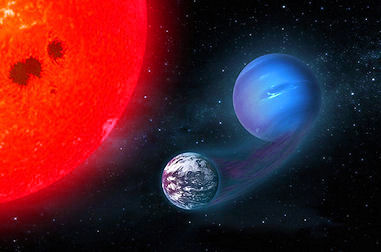
Sitchin was always fascinated by how new ideas in science reflected back the old ideas incorporated in the ancient texts (at least, his interpretation of them). He once correctly predicted the aquamarine colour of the planet Neptune based upon what he argued was the Babylonian description of the equivalent god, before it was first imaged by the Voyager 2 spacecraft. Writing about the long-standing assumption that no one could have possibly known what Neptune looked like prior to the Voyager flyby in August 1989, Sitchin remarked:
"But two months before the August encounter, I had written an article for a number of U.S., European, and South American monthlies contradicting these long-held notions: Neptune was known in antiquity, I wrote; and the discoveries that were about to be made would only confirm ancient knowledge. Neptune, I predicted, would be blue-green, watery, and have patches of colour of "swamplike vegetation"!" (3).
It may have been a lucky guess, or it might have reflected a deeper truth - that the ancients really did have some profound knowledge of the early solar system and how it was formed, and transmitted their knowledge through myth.
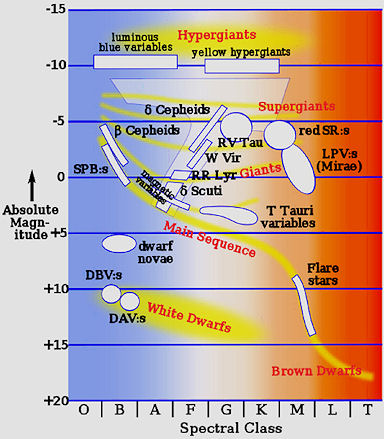
Red Dwarfs are in the 'Flare Stars' band on this
Hertzsprung–Russell diagram
So, I'm sure he would have enjoyed the paper recently published about how Earth-like rocky worlds might have formed via mini-Neptunes. There's no cosmic catastrophe involved, as the 'damage' done to the ice giant's atmosphere is caused through its interaction with the solar wind, ripping away the volatile hydrogen and helium components (4). A recent study on the formation of red dwarf (M dwarf) systems looked primarily at the action of two powerful mechanisms, the first of which are tidal forces exerted on a planet's interior by its proximity to its massive parent star. This can create tidal locking (as we saw in the item above), internal heating and volcanic activity to such a degree that its fledgling oceans are driven off the surface into space.
The second force is the solar wind from the young red dwarf star, heating up and driving away the atmosphere (5).
"Vigorous stellar activity also can destroy any chance for life on planets orbiting low-mass stars. M dwarfs are very bright when young and emit lots of high-energy X-rays and ultraviolet radiation that can heat a planet’s upper atmosphere, spawning strong winds that can erode the atmosphere away entirely. In a recent paper (5), Luger and Barnes showed that a planet’s entire surface water can be lost due to such stellar activity during the first few hundred million years following its formation." (6)
The same argument also goes for watery planets orbiting yellow dwarf main sequence stars like the Sun - I have discussed at some length the problems with the origin of Earth's water in previous blog articles, and in 'Dark Star: The Planet X Evidence' (7,8). How is it possible, against such odds, that you can be left with water-rich habitable planets in relatively close proximity to their parent stars? Perhaps by starting out with a heck of a lot of water? This, strangely enough, is the same as Sitchin's Tiamat argument, first mooted in... 1976.
The latest scientific hypothesis on this matter puts forward the notion that mini-Neptunes (ice giants with ultra-deep gaseous atmospheres enveloping small, rocky/icy cores) form some distance from the star and migrate inward into the habitable zone (4). There, they are subjected to intense solar radiation and bombardment by the solar wind, whereby they shed significant quantities of that ridiculously thick overcoat of helium, hydrogen and water. Hey Presto, what is left is an Earth-like world, abundant in water. The authors of this new study are confident that it solves many of the existing problems terrestrial planet formation:
"As terrestrial planet formation around M dwarfs by accumulation of local material is likely to form planets that are small and dry, evaporation of small migrating mini-Neptunes could be one of the dominant formation mechanisms for volatile-rich Earths around these stars."
(4)The problem is surely the tricky business of how the inward migration of the mini-Neptune occurs in the first place. A kick in the butt by a massive rogue planet like Marduk might be just the thing to spur it into action, don't you think?
Written by Andy Lloyd, 2
4th February 2015
References:
1) Zecharia Sitchin "The Twelfth Planet" Avon 1976
2) L.W. King (Translator) "Enuma Elish: The Epic of Creation" (from The Seven Tablets of Creation, London 1902)
sacred-texts.com/ane/enuma.htm
3) Zecharia Sitchin "Genesis Revisited" p6, Avon 1990
4) Luger R., et al., “Habitable Evaporated Cores: Transforming Mini-Neptunes into Super-Earths in the Habitable Zones of M Dwarfs,” Astrobiology, 15 (1): 57-88; January 2015
5) Rodrigo Luger & Rory Barnes "Extreme Water Loss and Abiotic O2 Buildup On Planets Throughout the Habitable Zones of M Dwarfs" 26 November 2014
6) Peter Kelley "Transforming Mini-Neptunes into Habitable Super-Earths" 29 January 2015, with thanks to John and Mark
7) Andy Lloyd "The Early Watery Planet"
28 November 2014andylloyd.org/darkstarblog20.htm
8
) Andy Lloyd "Dark Star: The Planet X Evidence" Timeless Voyager Press, 2005
Dyson Spheres and the Dark Star
Picking up on the theme of an obscured Dark Star which I discussed last month (1): A YouTube video was recently posted onto the Dark Star Planet X forum (2) about a concept known as a Dyson Sphere (3).

An Adaptation of "Shield World Construction" by Adam Burn
Although my first thought was that a Dyson Sphere might be some new-fangled kitchen appliance, it turns out it's a sci-fi concept describing alien engineering on a epic scale (4).
"Intelligent beings in another solar system could have hidden their sun by knocking their planets apart and using the pieces to build a hollow ball around their sun. Dr. Freeman J. Dyson of the Institute for Advanced Study, Princeton, N. J., says that other civilizations may be millions of years ahead of the earth. They may have rearranged their solar systems to meet the needs of their exploding populations. A hollow ball built around the sun would solve the space and energy problems. It would also cut off the sun's light. To detect such an advanced civilization, earthlings would have to detect the invisible heat radiation from the hollow ball." (5)
It's a far-fetched concept, to be sure. The scale of such an operation in, say, the solar system would be truly mind-boggling. A lesser project might involve a patchwork network of solar panels orbiting the Sun; although this would then involve transmitting that energy across space to some kind of receiver where it might be put to work and would be far less effective than a completed sphere.
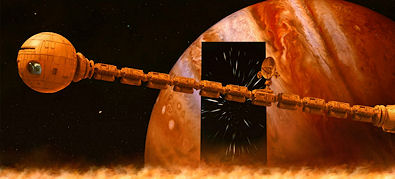
Image Credit: Steve Tyler, 2010
The original concept might work better, however, if you were to develop it for a Dark Star system. Obviously, the scale of such an operation would be much smaller, with the sphere perhaps extending to the equivalent of a Galilean moon orbit around Jupiter. One might then imagine an immense sphere surrounding a heat-emitting gas giant - much like the concept in the movie 2010 where the multiplying black monoliths engulf Jupiter, shrinking it down until its increasing density causes it to ignite into a (brown dwarf?) star (6). Except in the case of the Dyson Sphere, the idea of the monoliths would simply be to absorb the dim light and heat from the Dark Star within.

2001: A bad day at the office
All very interesting, you might say, but what has this to do with Nibiru/Planet X?
Such a scenario for a Dark Star orbiting around the Sun would explain why it has proven so difficult to find in visible light and infra-red sky searches, despite the many pieces of indirect evidence of something big roaming around out there in the dark. In this scenario, its light and heat are, quite simply, being blocked from view by a humungous engineered sphere. That captured energy is then being used by the Anunnaki to maintain the habitability of their dying homeworld in an immense engineering project. To provide sufficient resources to continue this project, they visited Earth and set up a colony to mine its precious mineral resources. Hence, their little excursion to our world, and their ill-fated experiments with hominids etc, etc.
I think it's a cool idea, although I'm not sure who exactly it should be credited to, as the YouTube channel owner is anonymous. Even so, the video is certainly worth seeing and thinking about (3).
Written by Andy Lloyd, 24th February 2015
References:
1) Andy Lloyd "The Shroud Hypothesis" 12 January 2015
andylloyd.org/darkstarblog22.htm
2) Dark Star Planet X Forum Post
3) Ancient-Astronaut Arguments "Nibiru's Dyson Sphere: The True Need for Anunnaki Gold?" (Video no longer online)
4) Deborah Byrd "What is a Dyson sphere?" 21 March 2014 with thanks to Bruce
5) "Shells Around Suns May Have Been Built" Science News Letter, 18 June 1960, page 389, Astronomy,
quoting: Freeman John Dyson, "Search for Artificial Stellar Sources of Infrared Radiation Science", Science, 131: 3414pp. 1667-1668, 3 June 1960
6) "2010 (Film)"
Correspondence about the Position of the Dark Star
This interesting feedback from Sheldon Day on my lead article last month:
"On your "image #2"
[1,2], your "suspicious"
object- "LDN 483"- is CLOSE to WHERE the "Right
Ascension" is according to Robert Harrington, that
PLANET X will COME inbound FROM... INTERESTING....
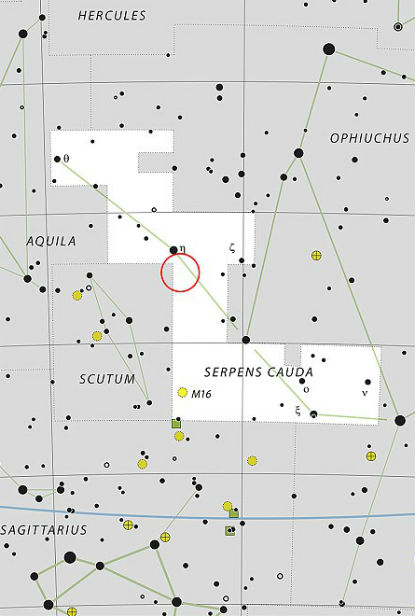
Image source: (2)
"Also, the OLD Leonard Nimoy 'In Search Of' episode from
Season#4, Episode #13, titled 'THE DARK STAR'
[3,4], aired 12/20/79, talks about the Dogon tribe..
Could the Sirius Star system the Dogon refer to REALLY
be PLANET X alluded to in that episode ???" (5)
Sheldon Day, Tucson AZ, USA
~~*~~
References:
1) Andy Lloyd "The Shroud Hypothesis" 12 January 2015
andylloyd.org/darkstarblog22.htm
2) Mark Prigg "Where did all the stars go? Astronomers reveal stunning image of giant ‘hole in the sky’ as mysterious dark cloud obscures view" 8 January 2015 with thanks to Mart
3) "In Search Of... The Dark Star (Part 1 of 2)" Season 4 Episode 13 part 1, hosted by Leonard Nimoy and broadcast weekly from 1976 to 1982,
4) "In Search Of... The Dark Star (Part 2 of 2)" Season 4 Episode 13 Part 2,
5) Correspondence from Sheldon Day, Tucson AZ, received 3rd February 2015
~~*~~
Hi Sheldon,
I've often wondered whether there was a link between Nibiru and the Dogon's Nommo star. I think there might be a connection with Sirius - perhaps the Anunnaki came first from the Sirius system, and found a suitable home in the Nibiru system when they emigrated to the solar system. Hence how the two got inter-meshed. I'm open-minded on this.
What you mention about the late Dr Harrington is also very interesting. I'm aware of his interest in the Planet X saga, going back some way, but didn't appreciate that he considered its point of emergence to be from this particular part of the sky. It tallies with a number of evidential points that I raised in 'Dark Star' pointing towards that area of the sky - John Murray's coordinates for his Nemesis-style object, Sitchin's discussion of the Biblical sequence of constellations that Nibiru travels through during perihelion, and so on. It's also the zone that one of the IRAS anomalies was pinpointed, before a rift in the IRAS team emerged between the Americans and European scientists working on the data - all well documented.
Andy Lloyd

You can keep informed of updates by following me on Twitter:
![]()
Or like my Facebook Page: https://www.facebook.com/darkstarandylloyd